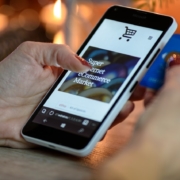There are many different reasons why you should be using paid advertising. Billions of people are searching online every day. Pay per click (PPC) advertising now accounts for about 65% of clicks – compared to 35% generated organically. People who click on a pay per click ad are 50% more likely to make a purchase than organic visitors.
If you want to get your product in front of your customers, it is essential to be paying for online advertising. Here are the benefits of using paid digital adverting and why you should be doing it.
Ads are affordable and measurable
Online advertising is a billion dollar industry – but that doesn’t mean you have to spend millions or even thousands of dollars in order to see results. With Pay Per Click advertising, you have total control over your budgets. This means you can spend exactly what you can afford. Google allows you to set daily budgets and maximum cost per clicks. You can bid on keywords and decide the maximum amount you want to pay to have your ad shown when that keyword is searched.
Maximize Return On Investment
Alongside Google Adwords, you can track conversions, monitor impressions to see how many potential customers your ads have reached, in Google Analytics as well. You can instantly see the results of your ads and make changes, allowing you to effectively meet your goals. You can maximize your return on investment by monitoring your cost per click and measuring cost per acquisition. If you are selling a product that costs $100, then spending $10 on a click isn’t worth it – but if your product is $10,000 it would be worth the investment.
Only Pay For Clicks
Pay per click advertising allows you to get the best return on investment as you only have to pay when someone clicks on your ad. When people see your ad but don’t click on it, this is essentially free advertising. Not only that, you can set daily budgets so you are in total control of what you spend.
Optimize
Google automatically optimizes your best performing ads. You don’t have to worry about which of your ads is the most effective. Google automatically monitors how your ads are performing and show the highest performing ads to more people.
Target a Specific Audience
Digital Marketing allows you to reach a specific audience by targeting exactly who you want to reach. You can allow your ads to reach people within a 10-mile radius of your store who are searching on mobile devices. By reaching a more qualified audience, you can ensure you are getting your message to the people who are likely to become customers.
Digital Advertising is fast evolving and it is important to keep on top of it. PPC ads can boost brand awareness by 80%. Here at Cloud9, we can help you manage your PPC account to get the best results for your business. Contact us – call 604-398-4016 or email: clientcare@cloud9marketing.ca




